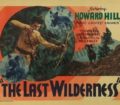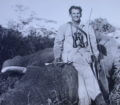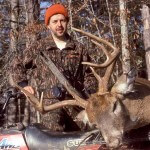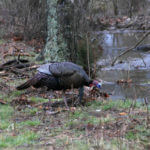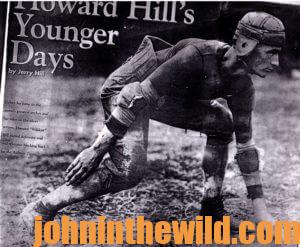 Editor’s Note: The little, barefoot, overall-clad boy Howard Hill made small clouds of dust as he raced from the cotton field down the road to the house holding the first rabbit he ever had killed with his bow and arrow. That first rabbit taken in Wilsonville, Alabama, marked a new page in the history of bowhunting and began Hill’s quest to fulfill his impossible dream that would span a lifetime, an ocean and two continents. Before Howard Hill – a world-renowned bowman who won more than 196 competitions and set a world record for the farthest recorded flight shot of 391 yards – died in 1975 at the age of 74, I was privileged to interview him. This giant of a man – still strong and powerful – grasped my hand in a hand twice the size of mine – and told me he still shot 100 arrows a day. He also said his heroes were the Native Americans, “Who were some of the best hunters who ever lived. They weren’t necessarily the best shots, but their abilities to stalk, get in close to their game and make clean kills set them apart.” He told me of his personal windmill, how he charged it, and how it fell.
Editor’s Note: The little, barefoot, overall-clad boy Howard Hill made small clouds of dust as he raced from the cotton field down the road to the house holding the first rabbit he ever had killed with his bow and arrow. That first rabbit taken in Wilsonville, Alabama, marked a new page in the history of bowhunting and began Hill’s quest to fulfill his impossible dream that would span a lifetime, an ocean and two continents. Before Howard Hill – a world-renowned bowman who won more than 196 competitions and set a world record for the farthest recorded flight shot of 391 yards – died in 1975 at the age of 74, I was privileged to interview him. This giant of a man – still strong and powerful – grasped my hand in a hand twice the size of mine – and told me he still shot 100 arrows a day. He also said his heroes were the Native Americans, “Who were some of the best hunters who ever lived. They weren’t necessarily the best shots, but their abilities to stalk, get in close to their game and make clean kills set them apart.” He told me of his personal windmill, how he charged it, and how it fell.
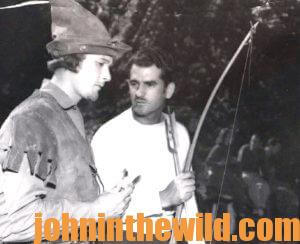
After playing three varsity sports – baseball, football and basketball and giving archery lessons to pay his tuition at Auburn University, Hill worked as a machinist and played semi-pro baseball. Hill’s big break in his quest for his dream of Africa came when he had the opportunity to perform the legendary tasks of the outlaw Robin Hood in the movie by the same name starring Errol Flynn. “When the producers asked me if I could split an arrow with an arrow, I told them I could do better than that – I could shoot a baker’s dozen,” Hill recalled. “They wanted to know what a baker’s dozen was, and I showed them.” Hill then proceeded to shoot the first arrow into the center of the target and split 12 consecutive arrows – one on top of the other.” The movie “Robin Hood” not only immortalized Hill as one of the world’s greatest archers but also brought him in close association with Errol Flynn, who was later to play a major role in Hill’s impossible dream. The movie also acquainted him with the ins and outs of the movie industry and gave him an education in script writing, production and cinematography. Hill learned his lessons well and began to write and produce his own 10 movie shorts, besides producing 23 films on archery for Warner Brothers. These Hill-made movies provided the income, fame and education that the man from Alabama needed for the pursuit of his elephant.
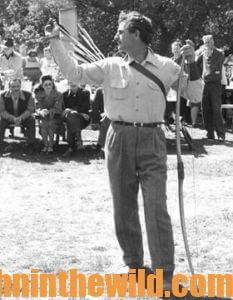 Finally, at the age of 50, after winning 196 field-archery championships without a single loss and taking every species of wild game in Canada, Mexico and the U.S. with a bow, Howard Hill knew he must start immediately if he were to reach his impossible dream. With the skills gained from being a toolmaker, Hill fashioned a broadhead that was strong enough, long enough and sharp enough to pierce the hide of an elephant. Then he constructed a specially-designed aluminum shaft to carry the broadhead.
Finally, at the age of 50, after winning 196 field-archery championships without a single loss and taking every species of wild game in Canada, Mexico and the U.S. with a bow, Howard Hill knew he must start immediately if he were to reach his impossible dream. With the skills gained from being a toolmaker, Hill fashioned a broadhead that was strong enough, long enough and sharp enough to pierce the hide of an elephant. Then he constructed a specially-designed aluminum shaft to carry the broadhead.
When the arrow and the bow were ready, the archer had to test his creation. For this Hill made two trips. The first was to a taxidermist’s in New York who was mounting an elephant and had a dried piece of hide. The arrow was let loose, and it went through the hide. Since no white man ever had killed an elephant with a bow and arrow, Hill had no knowledge as to what angle was the best, and where he could shoot to get the greatest penetration. But as fate would have it, an elephant died in a Chicago zoo. After a 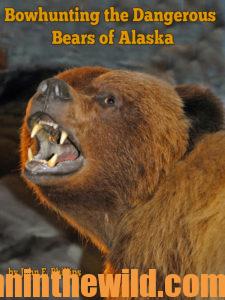 quick phone call to secure permission, Howard went to the zoo and tested his arrow on the dead carcass. “That’s all the information I needed,” he said.
quick phone call to secure permission, Howard went to the zoo and tested his arrow on the dead carcass. “That’s all the information I needed,” he said.
Hill realized what was needed was an arrow with a conically-shaped coil spring attached forward on the shaft, just ahead of the fletching. Once full penetration was achieved, the coil spring would be strong enough to stop the arrow and then spring it backward a short distance, either leaving the arrow projecting on both sides or pulling the broadhead back into the body cavity, so it could cut more. At that point, Howard Hill knew his windmill could be toppled. All he needed was a horse to ride, armor-bearers to carry his gear and the money to finance the project.
To learn more about hunting, check out John E. Phillip’s book, “Bowhunting the Dangerous Bears of Alaska” in Kindle and print versions at http://amzn.to/16ayVM0.
Tomorrow: How Longbow Hunter Howard Hill Prepared to Kill an African Elephant

